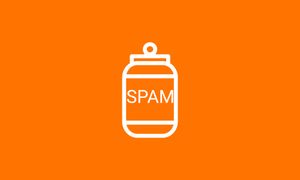Practical ideas to test to get more from your email campaigns.
Leads are the lifeblood of every digital business, and email marketing is a proven method to get leads and sales flowing. Email open and click-through rates can exceed those of other digital marketing methods; however, there are some best practices that you should follow to help your emails convert more efficiently. Get it wrong and you could just be wasting your time.
Recently, a family friend told me she was not happy with the results of her email marketing efforts. When I looked at the emails that she'd been sending out, I was surprised to see a full-page-width logo sitting on top of her message. Below the logo, she was using a three-column layout with two of the columns cluttered with 22 logos and icons and bold CTA’s. Not only could this trigger spam filters but it looks too busy. You have to have a clean and honest message, not just a sales pitch.
Best Practices for Email Etiquette
In order to maximise the chances of your emails being opened and read, you have to ensure you practice correct email etiquette to avoid being considered as a spammer. You must also make them look personal and natural.
How can you ensure your audience act on your call-to-action without making your email an obvious and pushy sales message? Adopting the following best practices can significantly improve the results of your email marketing campaign.
Subject Line Best Practices
In order to generate conversions, your emails need to provoke an interest. There are plenty of opinions on the topic of subject lines - some tips will work for your business and some might not. Tim Watson wrote an excellent article on Smart Insights in 2012 that encourages you not to follow subject line best practices, the tips that Tim mentioned will also work for some businesses, but not others. Regardless of opinion, subject line is important, whatever the goals of your email marketing campaigns. Here are some things to think about to help you achieve a good open-rate:
#1. Be personal and specific
You should write personally and be specific. "Is your dog nutritionally healthy?" is a better subject line than "Dog-owners! Provide your with dog a better diet". Using your addressees' first name in the subject line can also improve open rate, for example - "Matt, Is your dog nutritionally healthy?.

#2. Create a sense of urgency
One tip that works nicely for some of my clients is to try to show your audience that they only have a limited amount time to react. There are many ways to make your subject line convey a sense of urgency.
"Two Days Only—Here’s a gift, on us!". Using a headline like this, you are telling your customers they have to react quickly if they want to take up your opportunity. "Dog Training—Last few seats remaining". In this subject line, you are telling your audience the product is scarce, so they should grab the last seat before it's too late.
#3. Stimulate emotions
Fear, astonishment, curiosity, love, and hate are some of the feelings that you can play with in order to get your email opened. Try saying something your readership least expect: "Why your dog hates you". Obviously subject lines like these have a time and a place so don’t go overboard.
#4. Don't sell
Unless you have a special offer or giveaway, try not to pitch products in your subject line. A salesy subject line can lower your open rates. If you insist on using the subject line to sell then sell the benefits and not the product.
#5. Offer an incentive
You should plan your conversion or sale offer to include a perceived benefit for the reader. A free download is often a great conversion tool. Coupons, discounts, badges, and physical gifts are some of the other things that you can use. "Last Day: Claim your free T-Shirt".
#6. Avoid spammy words
Email spam filters are now fairly intelligent. You want to avoid using spammy words as much as possible. A few years back this was much more important than it is now but you should still pay attention to which words you use.
Design Best Practices
Most email marketing management tools offer a decent number of pre-designed templates and extra design tools. You could also opt for a custom HTML design. A custom design or attractive template can convey your brand message and look attractive. Be careful not to go over the top with visual elements, or you might distract the readers from the conversion. Simplicity is often key. Here are some of the best email design practices to follow:
#7. Mind the width
When designing your email template, make sure that its maximum width doesn’t exceed 650 pixels. It's best to keep it at 600 pixels. Anything beyond 650 pixels may not display properly in the email review pane.

Comparison of email widths - courtesy of smileycat.com
#8. Avoid lots of images
A picture is worth 1000 words. However, Gmail and most of other email service providers don't usually display images automatically. In addition, most spam filters will push an email with too many images into the spam folder. Try to restrict images to no more than 25-30% of your email to ensure good deliverability.
#9. A column too many
The family friend I mentioned above was using a three-column layout, which is something most email users are not accustomed to seeing. A conversion email should be simple, so that the readers may focus on the main message and action. Do not overload them with complex multi-column layouts - 1 or 2 columns is fine.
#10. Tag your images
Ensure you add Alt and Title text to your images. As already suggested, the images may not load, so it's a good idea to turn your Alt text into an alternative call-to-action and link the image to your landing page.
#11. Design your CTA
While you shouldn't use an image for your CTA, for obvious reasons (one mentioned above!), it's a great idea to design your CTA as an action button. Your readers should be able to find out instantly where they need to click. Your CTA needs to stand out.
#12: Use a light background
Use dark text on a light background. It converts so much better than using coloured or dark backgrounds as it looks cleaner and more appealing to the eye.
#13. Format text and links
Formatting improves the readability of your email. Highlight key points by making them bold. Format links to be a different color to the rest of the body. Try to keep the style in-line with your branding and only use one font.
#14. Integrate social media
Try to include social sharing options in your emails. Make use of them to expand the reach of your email. You would be surprised how sharable a good email can be!
Content Best Practices
If you are confident that the above points are taken care of, you can move on to the content. It's usually the content that will determine whether the person clicks-through, bounces or unsubscribes. Follow these best practices to increase conversions:
#15. Only have one CTA
To ensure your email performs, you must only give the readers one way of taking action. If you want your readers to buy dog-food, your whole email should be geared towards getting them to click through to your landing page. Don’t confuse your message by asking them to buy your product, download your eBook, follow you on Twitter and leave a review about you online - all in one email.
#16. Include multiple links
Having a single CTA doesn’t mean that you can't have more than one link in your email. However, the links should still point to your landing page. Try to avoid external links.
#17. Keep it short and sweet
The longer your email, the less likely your readers will read it all the way to your CTA. If you feel it's really important to write a detailed email, provide key information - possibly in the form of bullet points - right at the top, followed by your CTA, and then go on to provide more information below.
#18. Improve targeting
Segment your mailing list by using relevant attributes, such as buying history, average spending, geographic location, age, etc. When you organise your data and have defined segments, you can target different groups with different emails that appeal to those segments. If you are writing to your loyal customers, you could offer loyalty points. For new customers, you could offer a welcome discount. The better your targeting, the more efficiently your emails will convert.
#19. Provide clear contact information
You must provide your address and phone numbers in your email in order for it to look credible. Also include a helpline or email address to answer customer queries and resolve complaints. Your readers need to know what they can do if they want to make an inquiry or if something goes wrong.
#20. Match your email and landing page
Your email should work in harmony with your landing page in terms of the content, headline, look, and feel. Your readers should be able to instantly make the connection between the email they click and the page that opens.
#21. Provide Terms & Conditions
If your email asks people to buy your product or subscribe to a paid service, the transaction should be supported by the appropriate terms and conditions in order to sound credible. You should include a link to your Terms and Conditions page to boost the readers' confidence.
Bonus
#22. Use Tools
There’s a massive variety of tools which you can use to design your emails, evaluate your subject lines, and conduct A/B split testing to determine which particular version of your email converts better. Some of these tools come with built-in spam checkers and even human reviewers. You should select suitable tools for your business needs and make use of all the relevant features to improve the conversion performance of your emails.
#23. Monitor and Learn
Track your conversions with Google Analytics, as well as the software that the email marketing platform that you use provides. See which emails convert better than others and try to figure out why. Learn from your experience and don’t be afraid to experiment.
#24. Think mobile
Mobile phones and tablets are now the dominant choice of device to open emails. In 2013, 48% of emails were opened using a tablet or mobile phone. Ensure that when planning you campaign, you ensure you cater for this proportion of your subscribers. As ever, test your drafts on all the devices you can get your hands on.
Finally, anyone dealing with email marketing should be familiar with the CAN-SPAM Act. You may be liable to legal penalties if you violate these laws. If you have someone else managing your email marketing, make sure that they comply with the best practices recommended by law.






